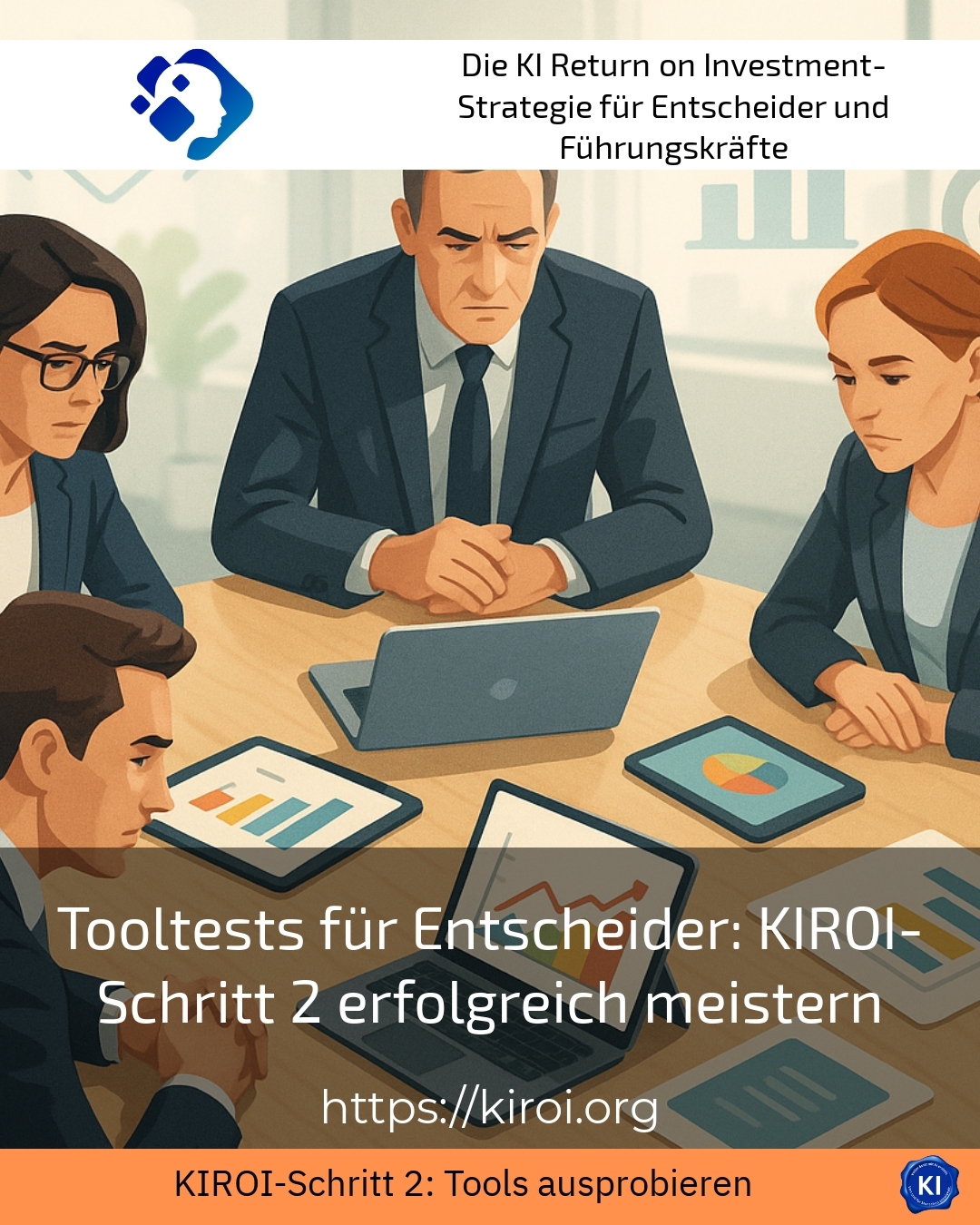Tool tests are an essential component for many decision-makers in order to safely select and successfully introduce suitable digital tools. Particularly in the context of KIROI step 2, targeted tool testing helps to shape digital change in a pragmatic and targeted manner. Decision-makers can test various tools under real-life conditions and filter out those that best accompany and effectively support the organisation's own processes.
Tool tests in KIROI step 2: A systematic and practice-orientated approach
The second step of the KIROI model focuses on tool testing in order to thoroughly evaluate new technologies. This is not only about the technical functionality, but also about user-friendliness and compatibility with existing systems. Successful tool tests are characterised by a clear structure: The requirements are analysed in detail, specific use cases are defined and suitable tools are selected on this basis. This is followed by practical tests in real environments in order to recognise the actual benefits and possible challenges.
This approach is used in various industries: For example, a logistics company tests various tracking and fleet management tools to check their integration into its existing IT ecosystem. In the marketing industry, agencies evaluate automation tools directly on current campaigns and thus receive direct feedback on their effectiveness. Healthcare organisations also use tool tests to assess software solutions for patient data management, taking into account data protection and user-friendliness.
Practical examples from the industry
BEST PRACTICE with one customer (name hidden due to NDA contract) A medium-sized production company carried out a tool test with new planning systems. In particular, the usability and connection to existing ERP systems were tested. They collected valuable feedback through workshops with various specialist departments and were thus able to identify a customised solution that provides sustainable support for their production process.
Similarly, financial service providers used tool tests to test compliance-orientated document management systems under everyday conditions. In this way, they ensured that the solutions met legal requirements and at the same time made employees' work easier. In the retail sector, on the other hand, checkout systems and merchandise management software were subjected to intensive utilisation testing to ensure smooth integration into shop operations.
Tips for a successful tool test
Anyone implementing tool tests in KIROI step 2 should follow a few key recommendations:
- Define specific use cases: The benefits of tools can only be objectively evaluated with clearly formulated use cases.
- Collaborate with various stakeholders: Involve IT, specialist departments and end users at an early stage in order to capture different perspectives.
- Carry out practical tests: Use real data and scenarios instead of theoretical examples.
- Document results systematically: Transparent feedback helps to make decisions comprehensible and to make adjustments.
- Use coaching for support: Professional support provides structure and impetus and favours greater acceptance among users.
These points can be found in a wide range of industries and reinforce the success of using digital tools. For example, a software provider for the construction industry carries out tool tests to ensure that their project management solutions are really practicable on site. In the education sector, schools are testing learning platforms with different teams of teachers to optimise their use. Similarly, a shipping service provider is evaluating automation tools for parcel tracking with a focus on high scalability and simple integration.
Benefits of support through transruption coaching
Transruption coaching provides professional support during tool tests. It helps to define the right evaluation criteria and focusses on the most important decision factors. This means that no effort is wasted on unmanageable test runs and the selection process is transparent and comprehensible. Clients often report greater innovative strength because the process combines agile methods with needs-orientation.
Another advantage is the support provided when integrating different departments. In this way, decision-makers ensure that not only technical aspects but also organisational and cultural factors are taken into account. This has a positive effect on the subsequent acceptance of the selected tools and minimises resistance during implementation.
My analysis
The tool test in KIROI step 2 is an indispensable step for decision-makers who want to make well-founded and practically relevant decisions. A structured approach that incorporates concrete use cases, realistic tests and systematic feedback allows suitable tools to be reliably identified and successfully integrated. The involvement of transruptions coaching offers valuable support in order to organise the process in a targeted manner and strengthen acceptance within the company. This results in solutions that give real impetus to digital transformation projects and bring about sustainable improvements.
Further links from the text above:
Tool test in KIROI step 2: Practical evaluation of AI innovations
Tool test in KIROI step 2: How decision-makers find the best
Testing the tool: How step 2 of the KIROI methodology works
Tool test in KIROI step 2: How decision-makers get started
Tool tests in KIROI Step 2: How decision-makers find the right tool
For more information and if you have any questions, please contact Contact us or read more blog posts on the topic Artificial intelligence here.















